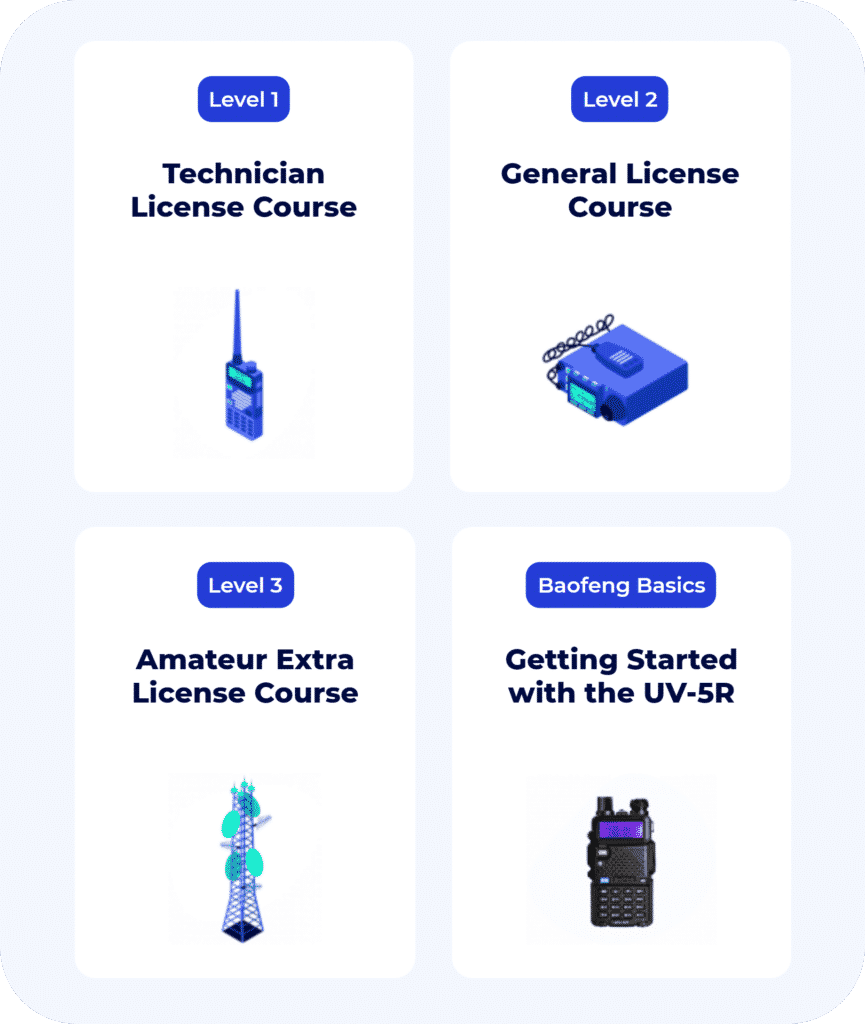Amateur Extra License Course
Watch the 5-minute video to get started
Read the lesson below and be sure to take the quiz afterwards to test your knowledge

These are the correct answers directly from the FCC Question Pools.
Licensing
Operating Rules and Regulations
The FCC maintains monitoring facilities around the country to insure compliance from all different types of radio services. An amateur station within 1 mile of an FCC monitoring facility must protect that facility from harmful interference.

Another special protected area is the National Radio Quiet Zone, an area surrounding the National Radio Astronomy Observatory. It’s a nice part of the country to visit with several parks, and quiet doesn’t mean silent. If you want to operate in the Quiet Zone for some special reason, reach out to NARO for more details.
Operating internationally and on ships

It’s fun to take your amateur radio mobile, and that includes operating on ships and planes, with some special rules of course.
In order to operate a ham radio station aboard a ship or aircraft, its operation must be approved by the master of the ship or the pilot in command of the aircraft. To put it simply, the captain of the cruise ship must give their OK.

There are several reciprocal license plans if you are operating internationally. The IARP is an international amateur radio permit that allows U.S. amateurs to operate in certain countries of the Americas.



